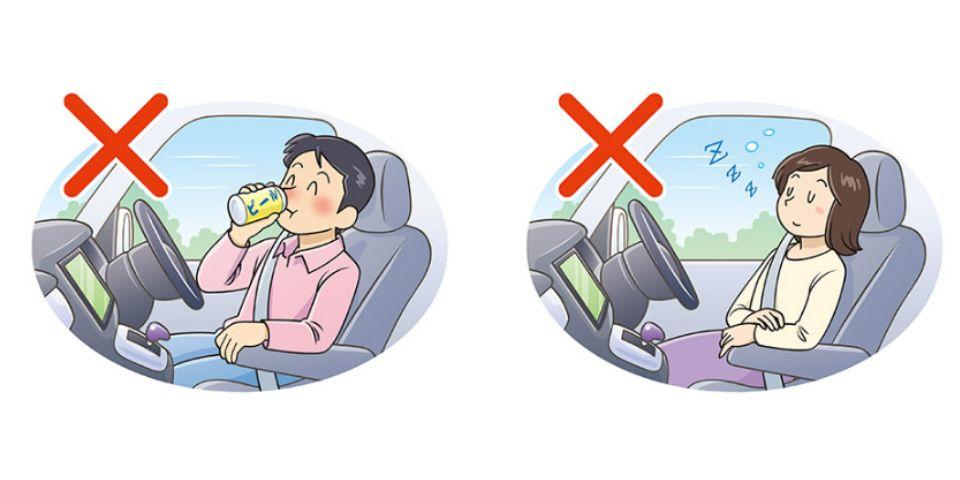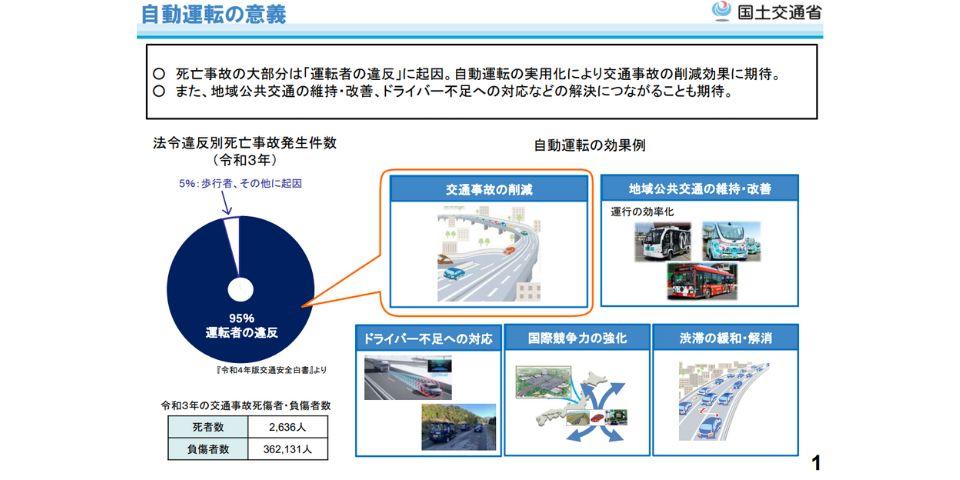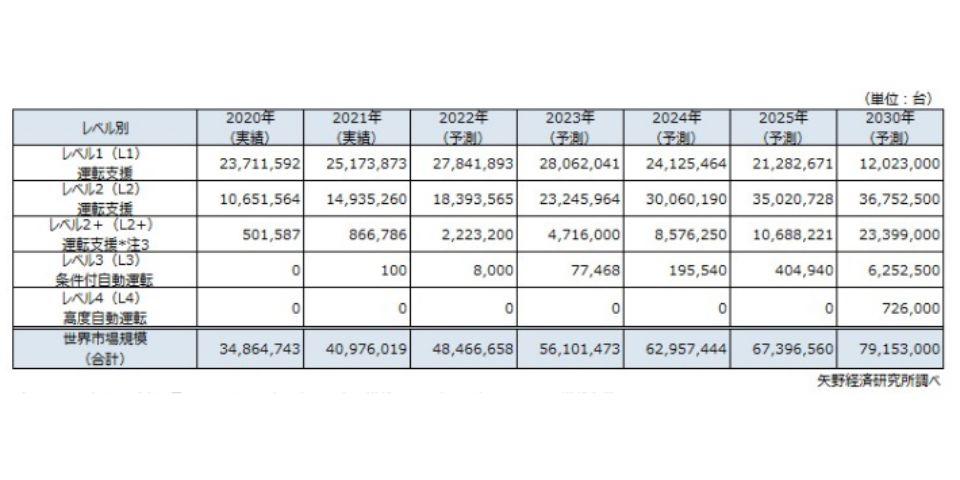
乗用車において運転支援である自動運転レベル2のシステムは既に幅広く実用化されているが、まもなくシステムが運転する自動運転レベル3の実用化が本格化してくるだろう。
本記事では、自動運転のレベル3についてフォーカスし、「自動運転レベル3とは何か」「自動運転レベル3でできる事やメリット」などを解説し、各自動車メーカーの開発動向について説明する。
「自動運転とはそもそも何か?」「自動運転のレベルとは何か?」という疑問を持つ方は、最初に下記の記事を読むことをおすすめする。
自動運転レベル3とは。国内における定義を解説
自動運転レベル3とは、「条件付き運転自動化」とも呼ばれており、国土交通省によると「システムが全ての動的運転タスクを限定領域において実行。作動継続が困難な場合は、システムの介入要求等に適切に応答」と定義されている。
国土交通省の自動運転レベル3の定義は、米国のSAE(自動車技術会)の定義した基準をもとに、分かりやすくした内容となっている。
自動運転レベル2と自動運転レベル3の違い
自動運転レベル2とレベル3では大きな違いがある。
それはレベル2では運転の主体はあくまでも人にあるが、レベル3は運転システムが主体となることだ。
レベル2まではADAS(先進運転支援システム)に分類され、システムはあくまでもドライバーを補助する機能となる。レベル2の機能として加減速と操舵の両方をアシストすることが挙げられ、具体的には高速道路など特定の条件下において車線を維持しながら前方車両を追従するような事が可能だ。
しかし、システムの補助で走行していたとしてもドライバーによる監視は常に必要となる。
一方で、レベル3は限定された条件下でシステムが全ての動的運転タスクを実行する機能となり、運転状況の監視もシステム側となる。つまりドライバーである人は、システムが走行している際、前方などを見ている必要はないということだ。
レベル3になることでドライバーの運転負荷の軽減などが期待されている。
自動運転レベル3と自動運転レベル4の違い
自動運転レベル3とレベル4は、ともに限定領域下においてシステムが動的運転タスクを実行するが、非常時などにおいてドライバーの対応に違いがある。
レベル3は、システムが運転タスクに対してドライバーの介入を要求することがある。その場合、ドライバーは速やかに応答し、運転を行わなければならない。例えば、システムが運行できる限定領域下にある高速道路上での走行から一般道へ状況が変化する場合や、システム不具合により走行の継続が困難と判断された場合などがドライバーの介入要求をするような事例に該当する。
一方で、 レベル4はシステムが運転タスクの継続を困難と判断しても、その際の対応はシステムが行う。具体的な例を挙げると、整備不良などにより運転できない状態になった場合には、周囲の状況をシステムが判断し、路肩など安全な場所に車両を停止する事などが挙げられる。
つまり限定条件下であれば、ドライバーは完全に不要となる。
こういった違いからレベル3はアイズオフ、レベル4はブレインオフと呼ばれている。
自動運転レベル3で出来る事
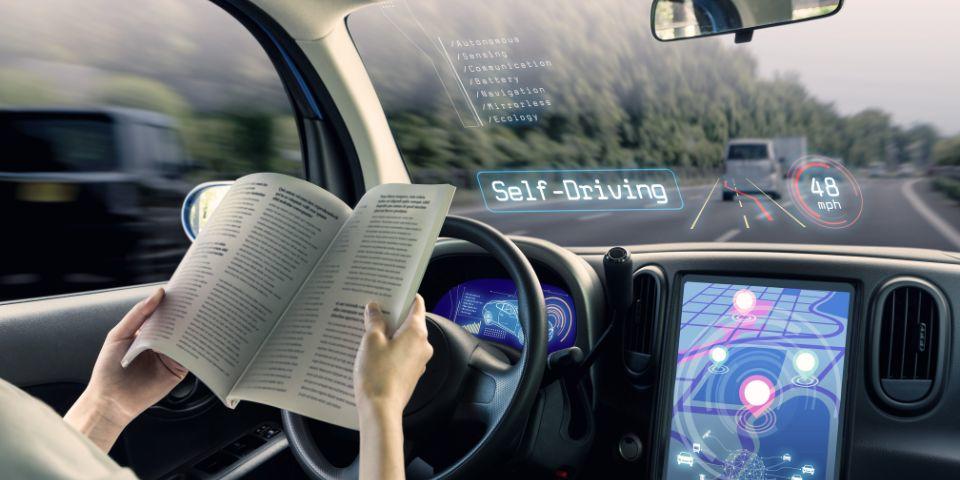
これまで説明した通り、自動運転レベル3では限定領域下でシステムが運行する。そのため、ドライバーは運転以外のことを行うセカンドタスクが出来るようになる。具体的には運転席に座っていてもハンドルから手を離し、スマホやカーナビ操作、車内のモニターでテレビなどの映像を鑑賞することができる。
しかし、システムが運行しているからと言って、このセカンドタスクで何をしてもよい訳ではない。それは自動運転レベル3では、運行できる条件下から外れたり故障が起こった場合、ドライバーは速やかに運転を引き継がなければいけないからだ。
これは通常の運転時と同様に、飲酒運転や居眠り・車内の座席移動など、速やかに運転を引き継げないような行為は禁止となる。
しかし、このセカンドタスクで許可されている事、禁止されている事は明確に線引きされていないケースも多い。判断が難しい例を挙げると、車内でDVDを鑑賞している際に外部の音が聞こえないようなヘッドホンを着用しているなど、レベル3システムのドライバー介入要求に速やかに答えられない場合は違法となる可能性がある。
こういった判断が難しい事例もあるため、レベル3システムでの運行時はドライバー自身が要求に応えられるよう注意する必要がある。
自動運転レベル3のメリット
アイズオフが可能になる自動運転レベル3が普及することのメリットは、ドライバーのみならず、社会全体でも非常に大きい。国土交通省の資料では、自動運転で期待できる効果として「交通事故の削減」「渋滞の緩和」「地域公共交通の維持」「ドライバー不足への対応」「渋滞の緩和」などが自動運転の社会に与えるメリットとして記載されている。
もちろん自動運転には、ドライバーが受ける「運転時間の有効活用」などのメリットもある。
それぞれのメリットについて、下記にて詳細に解説する。
交通事故の防止・削減
自動運転が普及することによるメリットとして最初に期待されていることが、交通事故の 防止・削減だ。
国土交通省が令和5年に発表した資料によると、令和3年の交通事故死傷者は2,636人、負傷者数は362,131人となっており、内訳を見ると運転操作不適や漫然運転・わき見運転などの「安全運転義務違反」が全体の53.6%を占める。またその他にも酒酔い運転・一時不停止・追い越し違反などを加えると、死亡事故の95%が「運転者の違反」に起因しているという。
仮に全ての車が自動運転レベル3になれば、特定領域下のみだが「運転者の違反」が発生しづらくなるため、死亡事故件数の削減効果が期待できる。
渋滞の緩和・抑制
次に期待されるメリットとして、渋滞の緩和・抑制が挙げられる。
渋滞は分類すると事故渋滞・工事渋滞・自然渋滞の3つに分かれる。しかし、 渋滞が発生する原因となると、どの渋滞も不適切な車間距離や加減速が一因となっている。
特に自然渋滞が起きやすい道路は、上り坂や高速道路と一般道の接続部分・トンネルなどがあり、ドライバーが無意識に速度を落としてしまうような特徴がある。
しかし、自動運転レベル3が普及してくると、ドライバーが無意識に減速してしまっていたエリアでも、一定速度で安定した車間距離を保ちながら走行することが可能になる。
自動運転レベル3の車両が1台だけ走行しても渋滞は緩和されないが、集団で走行すれば渋滞の緩和や抑制が期待できる。
補足説明になるが、国土交通省が2015年に発表した資料「高速道路を中心とした「道路を賢く使う取組」の基本方針」によると、ドライバー1人当たり年間およそ40時間、無駄にしていると公表している。この調査は2012年当時のもので、2015年の日本の総人口は約1億2700万7千人だったため、これら一人当たり40時間を無駄にしていたと考えると、日本全体で約50億8000万時間を無駄にしていたことになる。
もし自動運転レベル3が広く普及すれば、大きな経済損失を防ぐことが可能だ。
地域公共交通の維持
自動運転レベル3の普及によるメリットに地域公共交通の維持が挙げられる。
電車がないような地方では自家用車での移動、もしくは地域の公共バスによる移動が一般的になる。しかしながら、地方の公共バスなどは高齢化などにより、利用者が減少する傾向があり、いかにして継続的にサービスを続けていくことが課題となっている。
自動運転レベル3ではドライバーの負担を軽減するメリットがある。これが自動運転レベル4まで進歩すれば、ドライバーレスとなり、コスト面で継続的にサービスを続けていきやすくなるメリットがある。
運転時間の有効活用
自動運転レベル3によるドライバーが受けるメリットは、これまで運転していた時間の有効活用が挙げられる。
通常であればドライバーは運転に集中しなければならないため、スマートフォンを見たり、片手でスマホを持ちながら通話する事はできない。
しかし、システムが運行を行っている間は上記のような行動が可能となる。例えば、システムで運行している間に、ノートPCでオンライン会議を行ったり、スマートフォンで調査を行ったり、動画教材で学習を行ったりなど、その空いた時間の活用方法は多岐にわたるだろう。無論、いつでもシステムから運転を代わることができる範囲での行動に限られる。
自動運転レベル3はいつから実現する?
自動運転レベル3は、2020年4月に改正された道路交通法により、高速道路など特定の条件下で公道の走行が許可された。また法改正に伴って、数が少ないながらも既に市販車で実用化されている。
しかし、2023年11月現在では、日本で発売されている市販車に広く普及するまでに至っていない。また日本の自動車メーカー各社は、自動運転レベル3を市販車に搭載していく日程を公開していないメーカーがほとんどだ。
一方で、市場調査およびマーケティングを行っている矢野研究所の2022年度の調査によると、自動運転レベル3のシステムを搭載した車両は2025年には世界で約40万台、2030年には約625万台 市場に いると予測している。
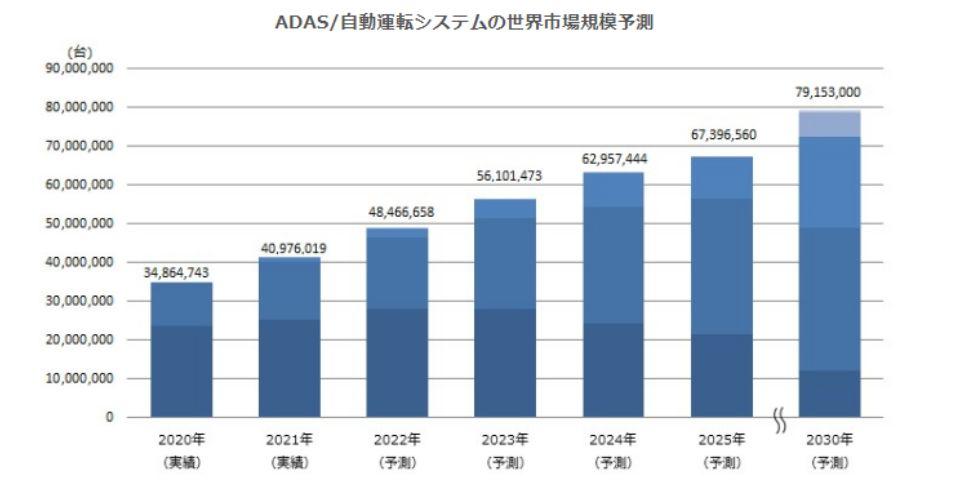
このデータから一般ユーザーが購入する市販車に自動運転レベル3のシステムが普及するのは2025年以降と考えておくのがよいだろう。
自動運転レベル3のシステムが搭載された市販車一覧
2023年11月現在、自動運転レベル3のシステムを搭載した市販車を紹介する。
HONDA レジェンド
国内で販売された国産の自動運転レベル3の市販車は、「Honda SENSING Elitet」を搭載したHONDAの「LEGEND」のみだ。なおこのLEGENDは自動運転レベル3のシステムを搭載した世界初の市販車となる。しかしながら、このLEGENDも2022年1月をもって、生産していたHONDAの狭山工場の閉鎖に伴い、生産終了となっている。それ以降、日本国内において自動運転レベル3に対応した市販車は発売されていない。
メルセデスベンツ EQS
海外で唯一市販車として自動運転レベル3のシステムを搭載しているのは、メルセデス・ベンツの「EQS」だ。EQSはDRIVE PILOTという運転支援システムを搭載し、高速道路などの交通量が多い区間において、時速40マイル(約64km/h)以下という条件下でのみレベル3の走行が可能となる。
国内メーカーの自動運転レベル3の開発動向
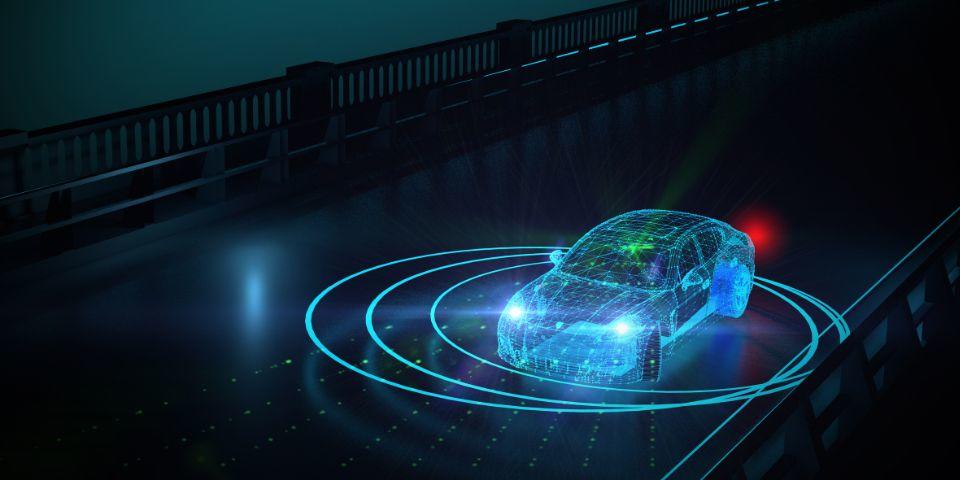
ここでは、国内自動車メーカーとしてトヨタ・HONDA・日産の自動運転レベル3の開発動向を紹介する。上記3社以外に国内にはSUBARU・MAZDA・三菱・ダイハツ・SUZUKI等、有名なメーカーが多数存在するが、自動運転の技術や適応時期について具体的なロードマップを公開していないため、今回は割愛する。
トヨタの自動運転レベル3開発動向
まずトヨタは、2023年11月現在、自動運転レベル3のシステムを搭載した市販車は発売していない。
トヨタは、2018年にデンソー・アイシンと共同出資で設立したTRI-AD(トヨタ・リサーチ・インスティテュート・アドバンスト・デベロップメント)で自動運転の開発を行っていたが、2023年11月現在はウーブン・バイ・トヨタ株式会社という名称で技術開発を行っている。また自動運転の発展が目覚ましい中国市場では、2019年より自動運転技術の開発を手がけるPony.aiと協業し、開発を行っている。
実用化の時期については明言されていないが、トヨタの独自メディアである「トヨタイムズ」にて、中国での自動運転の実験走行の様子が公開されていることから技術開発は確実に行われているように見受けられ、ハンズオフで道路環境を認識して走行車線の変更や追い越しをする様子が収められている。
HONDAの自動運転レベル3開発動向
HONDAは2021年3月に世界初の自動運転レベル3のシステム「Honda SENSING Elite」を「LEGEND」に搭載し、発売した。しかし、そのLEGENDも2022年1月に生産を終了し、その後自動運転レベル3に対応した車両は発売されていない。
HONDAはLEGENDで培った技術を活用し、ハンズオフができる自動運転レベル2の進化版に相当する「Honda SENSING 360」を2024年以降に順次追加していくとのこと。
また自動運転レベル3のシステムである「Honda SENSING Elite」の次世代技術は、高速道路だけではなく、複雑な一般道を走ることができるなどの高度な自動運転の技術開発を進めている。
これらの自動運転レベル3に相当する技術は、2020年半ばごろから適応をしていくと発表している。
日産の自動運転レベル3開発動向
日産は2023年11月現在、自動運転レベル3のシステムを搭載した市販車は発売していない。
現在は一部走行状況において、ハンズオフ走行が可能な高度な自動運転レベル2にあたる「プロパイロット2.0」を搭載したアリアやセレナが発売されている。
自動運転レベル3に近い高度な自動運転技術を持つ日産だが、レベル3の技術開発動向や今後の計画については、具体的には明言していない。
海外メーカーの自動運転レベル3の開発動向
海外の自動車メーカーの自動運転の開発動向として、市販車へ自動運転システムを搭載するよりもタクシーやバスなどの商用車に搭載しているように見受けられる。それも自動運転レベル3ではなく、自動運転レベル4として搭載し、ドライバーレスな事例が増加してきている。
例えば、中国の北京では2023年3月に百度とPony.aiが完全ドライバーレスの自動運転タクシーの試験運転を開始している。
また2022年6月のアメリカではサンフランシスコ市内にて、WaymoとGM Cruiseの2社が完全ドライバーレスで自動運転タクシーを運行している。
まとめ
自動運転技術の進化ペースは、非常に早く1年毎に状況が変わってきている。特に自動運転レベル3、レベル4までは道路交通法が改正され、官民一体となって取り組んでいるため、技術の進化も早い。
自動運転レベル3のシステムを搭載できる市販車は、2030年までに激増することも予想されているため、国内・海外問わず要注目だ。
お問い合わせ
当社マクニカでは、自動運転に関する様々な製品やサービスを提供しています。自動運転に関するご質問やご要求などございましたら、以下よりお気軽にお問い合わせ下さい。

